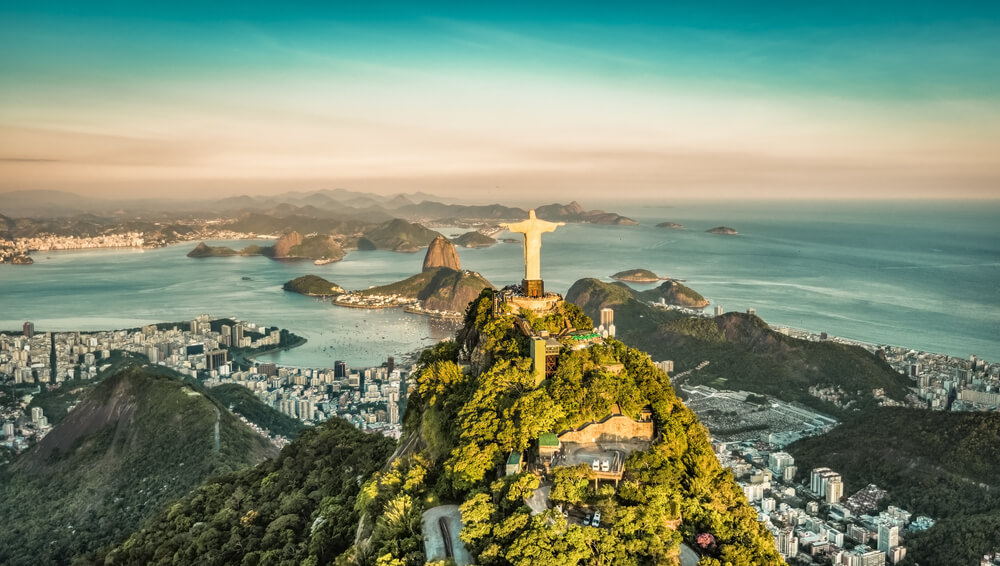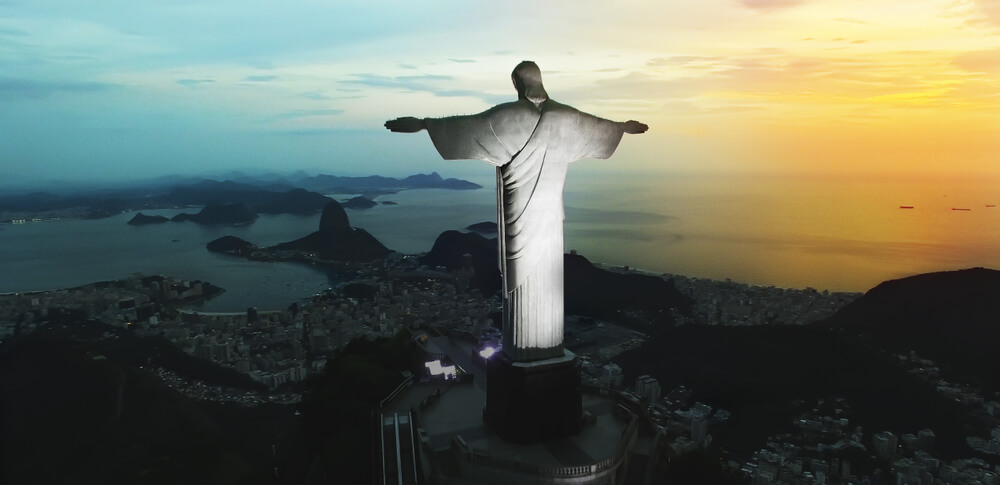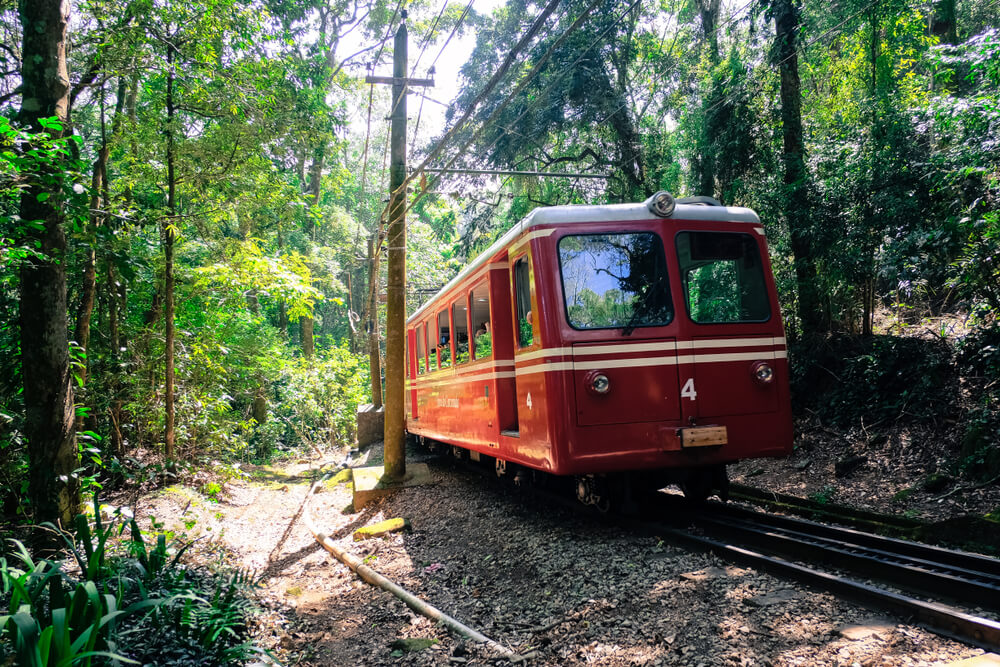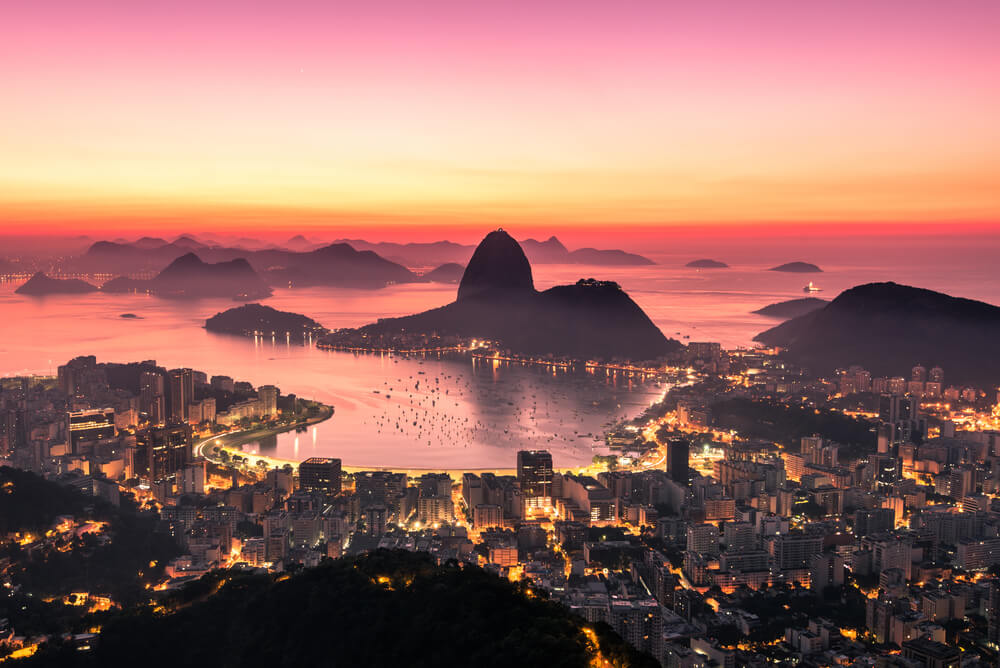How to visit Christ the Redeemer in Rio?

When planning a trip to Rio, the image of its most famous statue comes almost immediately to mind.
It is impossible not to think of the Corcovado, on whose summit a giant statue of Christ protects and blesses the City of Wonders, enveloping it in his open arms.
In a statue, the city had acquired its symbol.
Here is all the information you need to understand the origins of this construction and plan your visit.
What is the story of Christ the Redeemer?
It all starts with an impressive sight…
The first Portuguese settlers were so fascinated by the view that they nicknamed the mountain Pináculo da Tentação (Pinnacle of Temptation ) before renaming it Corcovado (Hunchback). Later, they came up with a totally crazy idea for the time: to build a road to the top.
Then, a tourist route…
In 1824, a 4 km long tourist route was inaugurated, a great first!
The feat of a railway…
60 years later, a railway line took you to the top of the mountain from the Cosme Vehlo station. This railway line, almost 4 km long, was the first in the country to be built exclusively for tourist purposes. The materials needed to build Christ the Redeemer were transported along this same line.
In 1910, the railway line was even the first to be electrified, replacing the old steam wagons with more modern engines.
And to top it all off, a huge statue!
The idea of erecting a religious monument on the top of Corcovado was born in 1859. It was the Lazarist priest Pedro Maria Boss who proposed the idea to Princess Isabel of Brazil and asked her to finance the project.
However, the monument never saw the light of day, and it was not until 1921 that the idea was raised again, as part of the preparations for the celebration of the centenary of Brazil’s independence the following year.
The Church wanted to reaffirm its presence in Brazil and the project was approved.
A major competition was organised and the design by the Brazilian engineer Heitor da Silva Costa was selected. The execution of the project was entrusted to the French sculptor Paul Landowski.
The foundation stone was laid in 1922, but work did not begin until 1926. Two years later, the metal structure was transformed into a concrete structure (also designed by a Frenchman, Albert Caquot) and the statue finally acquired its cross shape.
Five years later, the work was done and the statue was unveiled on 12 October 1931.
Some figures …
- Corcovado is one of the largest statues of Christ in the world.
- It attracts more than 600,000 visitors a year.
- It has been a protected historical monument since 1973.
- It is one of the New 7 Wonders of the World.
- It stands 710 metres high in the Tijuca Forest National Park.
- It is 38 metres high (30 metres for the Christ and 8 metres for the pedestal).
- It weighs 1145 tons
- The distance between the two hands is 28 metres.
- The viewing platform is reached by 220 steps (nowadays there are also escalators and lifts).
How to get to the Corcovado?
To reach the famous Christ the Redeemer, you must first get to the foot of Corcovado.
- By taxi or Uber (the drivers know exactly where to drop you off, so don’t worry!)
- By metro: get off at “Largo do Machado” station to catch a shuttle bus or walk 30 minutes to Cosme Velho station, where the climb begins.
- By bus. The bus stop is at the beginning of the climb. Buses 180 and 184 from the centre. Bus 583 from Ipanema and Copacabana.
Once there, you have several options to get to the top of Corcovado: by train, by bus or on foot!
By train
Taking the little cog railway to the top of Corcovado is quite an experience.
You’ll pass through the magnificent Tijuca National Park and enjoy a historic ride while taking in splendid views of the jungle.
Good to know:
- The ride departs from Cosme Velho station, accessible from the city centre by bus or Uber.
- The ride takes about 20 minutes, with departures every half hour.
- The train travels up at 15 km/h and down at 12 km/h.
- Tickets can be purchased in advance on the train’s official website (trem do corcovado).
- The price includes round-trip train travel and a tour of the site.
- Saturdays, Sundays and public holidays are considered high season.
For more information on fares and timetables, which are constantly changing, visit the official website: https://www.tremdocorcovado.rio/institutional/6/informations-pratiques.html.
By shuttle bus
You can also choose to use the shuttle bus system set up by the Rio prefecture to take you to the top of Corcovado.
They run daily from 8.00 am to 5.00 pm and leave approximately every 10 minutes. They depart from the Paineras Visitor Centre, but some are accessible from Largo do Machado or Copacabana. In this case, the shuttles will stop at the Visitor Centre, where you will pay for the second part of the journey.
As all travellers converge at Paneiras, it is best to buy your ticket online to avoid long queues.
https://ingressos.paineirascorcovado.com.br
The views are not as impressive as by train, but the shuttle bus ride includes a stop at the Mirador da Dona Marta, from where you will have a magnificent view of the Tijuca National Park and Corcovado on one side and the Sugar Loaf and Guanabara Bay on the other.
By car
If you come by car or motorbike, you can get as far as Paneiras, but no further. From there, you will have to take a shuttle bus or walk up the hill.
On foot
The good news is that you don’t have to follow the tourist route to admire the view from beneath the arms of Christ.
Many travellers choose to walk up and through the Tijuca Forest. The only thing you have to pay for is access to the monument.
The walk (trilha) takes about 1h30/2h depending on your level. Technically it is not difficult, but the end is quite steep, so beware of the heat! Don’t forget to bring plenty of water. It is best to wear good shoes and leave at the coolest time of the day.
The walk starts in Lage Park, next to the botanical garden. There you will see a small forestry hut marking the entrance to the trail. The path is steep and ascends all the way up. Views regularly open out over the bay, offering opportunities for scenic breaks, and it ends, somewhat disappointingly, on the tarmac with the rest of the tourists arriving by road.
When to visit Corcovado
The site is open 7 days a week, from 9.00 am to 7.00 pm.
Rio has an oceanic climate and is known for its fog, which usually appears after 11am. It can add a mystical touch, but also spoil the views. So the best time of day to visit Corcovado is in the morning. Besides, it is less crowded, so it is much more pleasant.
The weather is definitely something to keep in mind, and if you see the weather is getting cloudy and clouds are approaching, avoid the climb that will take you just above the clouds. It may make for a good photo, but it’s a shame not to see the bay and its incredible sugar loaves.
Another ideal time of day to climb Corcovado is at sunset, when the city lights up. In Rio, the sun sets early, and in midsummer, in December and January, it sets around 7.30pm, but from February onwards, you can see the sunset from 6.30pm! 5 p.m. in winter.
Disabled
Visiting Christ the Redeemer is entirely possible for wheelchair users, as the monument has a lift to avoid the steps, and the site’s services and facilities are adapted.
Curiosities
You can get married at the foot of Christ the Redeemer.
At the base of the statue is a chapel dedicated to Nossa Senhora Aparecida, the patron saint of Brazil, where weddings and baptisms can be held.
A great view for a souvenir photo.
200 audioguided tours for cities all around the world
Download



